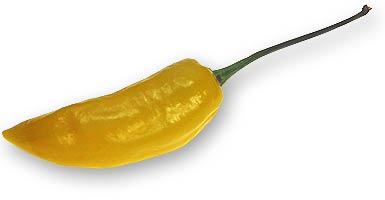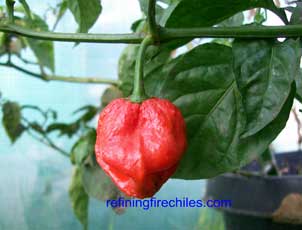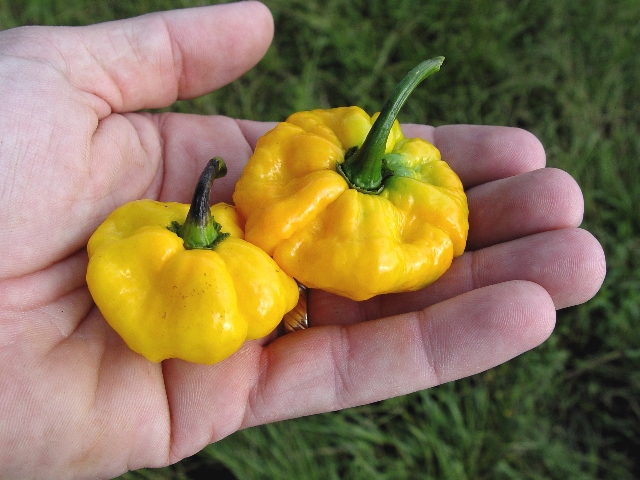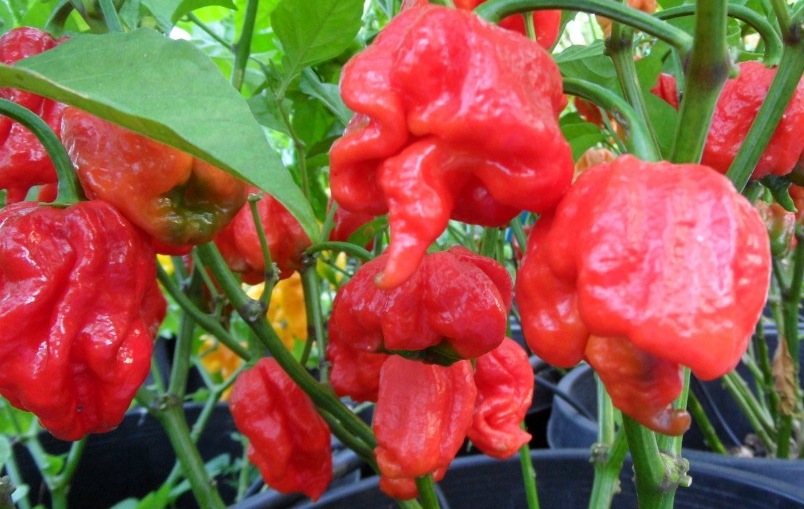By Dave DeWitt
Fiery Foods & BBQ Recommendations
Chile Pepper Bedding Plants… over 500 varieties from Cross Country Nurseries, shipping April to early June. Fresh pods ship September and early October. Go here
Chile Pepper Seeds… from all over the world from the Chile Pepper Institute. Go here
Photos by Harald Zoschke
The Plant
Like the Habanero, Scotch Bonnet and Red Savina, Fatalii belongs to the Capsicum chinense family. Due to their high dehydrocapsacin capsaicinoid content, C. chinense peppers typically offer a somewhat delayed heat sensation that sneaks up on you. If you ever tried a habanero or a habanero sauce, you know what I’m talking about. On the contrary, the Fatalii also delivers an instant burn. Add an intense, fruity flavor, and you have an interesting habanero alternative. The Fatalii pepper originates in Central Africa, evolving from peppers that returning slaves brought to their home continent.
Growing your Own
Fatalii seeds are available through various pepper seed vendors. During growing season, small plants are available from www.chileplants.com. The plants grow 20 to 25 inches in height, and plant distance should be about the same. Fatalii plants love full sun and really thrive in a greenhouse. The plants are also suitable for containers–which is great, because you can pick the sunniest place around the house and get them indoors in time before the first fall freeze kicks in (like with all pepper plants, freeze would be fatal to Fatalii). Don’t overwater–a little stress makes the pods even hotter. The pendant pods get 2.5 to 3.5 inches long and about 0.75 to 1.5 inches wide. From a pale green, they mature to a bright yellow (there are red Fataliis around as well, but the yellow one is the “real thing.”)
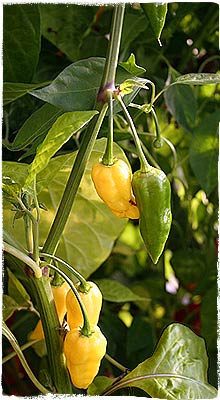
Mature and immature pods on the plant.
Typical for
C. chinense: multiple pods at each node.Culinary UseIf you cut them lengthwise, the rather thin-walled Fatalii pods are easy to dry. In more humid climates, you may have to use a dehydrator. Using a retired coffee grinder, you can turn the dried pods into a wonderfully hot and flavorful powder (store it in a cool, dry and dark place). The pods also freeze quite well, but their fruity fragrance is enjoyed best when fresh.
Commercial Products
So far, I’m only aware of one company that uses this interesting chile variety in hot sauces, and that’s Cajohns Fiery Foods in Columbus, Ohio. They bottle a pure Fatalii puree with just as much vinegar as necessary–a tongue blistering experience. Great for the salsa recipe below if no fresh Fatalii pods are available–substitute one teaspoon of Fatalii puree for each fresh pod. Cajohn also makes a sauce called Fatalii Fire, using the pungent pods, vinegar, onions, garlic and pepper. Not for the timid either is their “Talon,” a mind-blowing hot sauce that combines Fatalii and Red Savina peppers.


